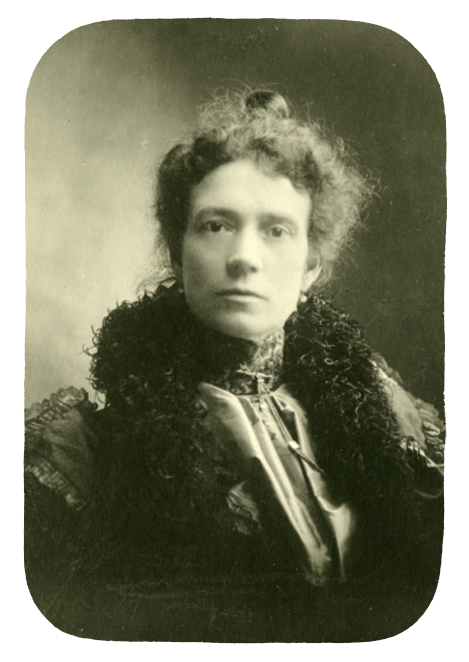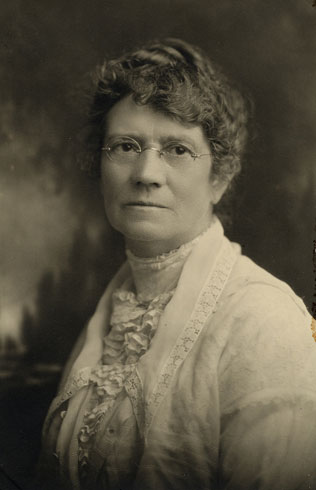
Ruth May Fox,
Equal Rights Proponent and Poet
1853-1958
“I say women to the rescue; women to the front.”
by Brittany Chapman Nash
Ruth May was born in 1853 in Westbury, Wiltshire, England. During her childhood, her family joined the Church of Jesus Christ of Latter-day Saints and immigrated to Utah’s Salt Lake Valley. They arrived in August 1867, when Ruth was thirteen. She worked in Utah’s woolen mills until her marriage at age nineteen to Jesse Williams Fox Jr. For the first time, Ruth experienced financial prosperity as her husband was a surveyor and successful speculator. They eventually became the parents of twelve children.
In 1888, Jesse married a plural wife. Ruth was “not happy about it,” but “like every other Latter-day Saint woman in like circumstances,” she “bore her cross faithfully.” Only a few years later, in 1893, the economy collapsed and the Fox family never fully recovered financially.
It was about this time that Ruth began to expand her circle of influence. Service in her congregation had been a natural part of her life from her youth, but in 1892 Ruth began her association with Utah women’s clubs, including becoming treasurer of the Utah Woman Suffrage Association. She said her “willingness to work was soon discovered,” which led to her being asked to join a variety of groups. A poet, she also began publishing her poems in newspapers.

Ruth May Fox. Photo courtesy of Utah State Historical Society
A pivotal moment in her public life came when she became a charter member of the Utah Woman’s Press Club, where she developed close relationships with prominent Utah women, particularly Emmeline B. Wells. Emmeline and Ruth formed an almost mother-daughter relationship. Together they joined the Republican Party and toured a variety of Utah settlements, speaking publicly to promote Republicanism and suffrage.
Ruth worked to improve the lives of women, speaking to many groups, helping draft petitions to include women’s suffrage in the State Constitution that Utah delegates would propose in its 1895 bid for statehood, and walking all over Salt Lake City to solicit signatures. Her efforts proved successful when Utah’s constitutional delegates voted to include an equal suffrage clause. Even before Congress approved the Constitution, Ruth believed that Utah’s “statehood was assured, and that means rights for women.” [1]

Ruth May Fox voting in 1956. Photo courtesy of Utah State Historical Society
In her “Lecture on Suffrage” delivered to the Reapers’ Club that year, she declared:
“Never let it be said that women are regardless of the rights of their sisters, rather let us labor for them and with them, let us educate them until they shall assert their independence and shake the shackles from their wrists, thus may we lift them to a higher plane. . . . I say women to the rescue; women to the front; join with good men . . . let the work roll on, and the word go forth that women will neither be bribed nor persuaded from the path of duty but once knowing it, will do it or die. Let her conscience go into politics as it has in her home so shall she carry the white banner of purity and liberty, casting her ballot at all times for the best good of all mankind.” [2]
In 1898, Fox joined the general board of the LDS Church’s organization for young women, then called the Young Ladies’ Mutual Improvement Association. From 1929 to 1937 she served as general president of the organization.
Brittany Chapman Nash, a descendant of Ruth May Fox, is an independent historian based in Salt Lake City, Utah. She is co-editor with Richard E. Turley Jr. of the four-volume series Women of Faith in the Latter Days, and is currently editing the personal writings of Ruth May Fox.
Footnotes
[1] Ruth May Fox, Diaries, 14 July 1895, holograph, Church History Library, The Church of Jesus Christ of Latter-day Saints, Salt Lake City, Utah.
[2] Ruth May Fox, “Lecture on Suffrage,” Woman’s Exponent 24 (August 15, 1895), 41-42.

